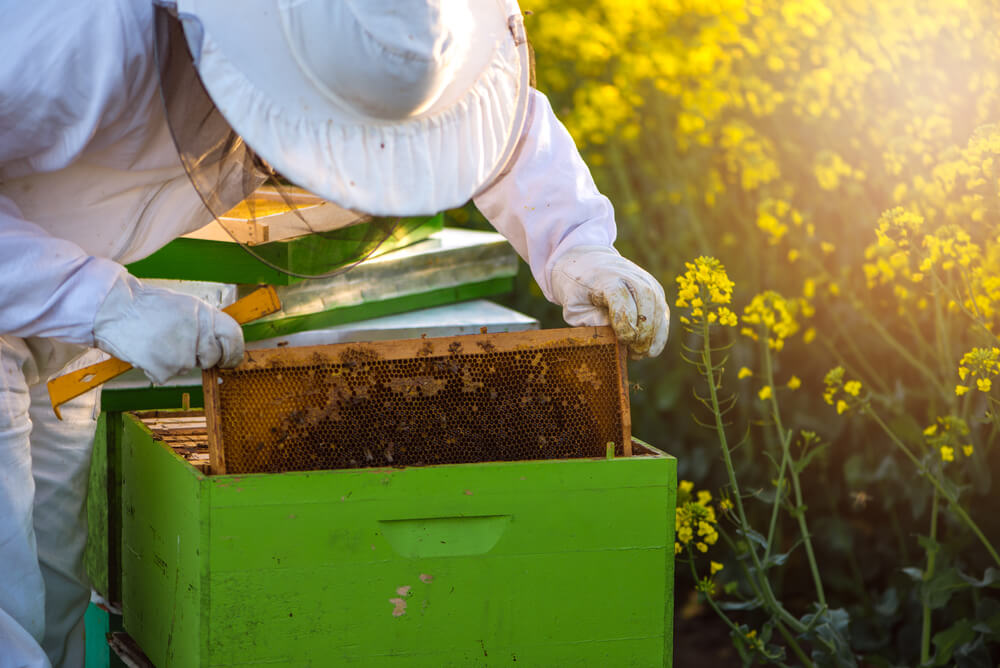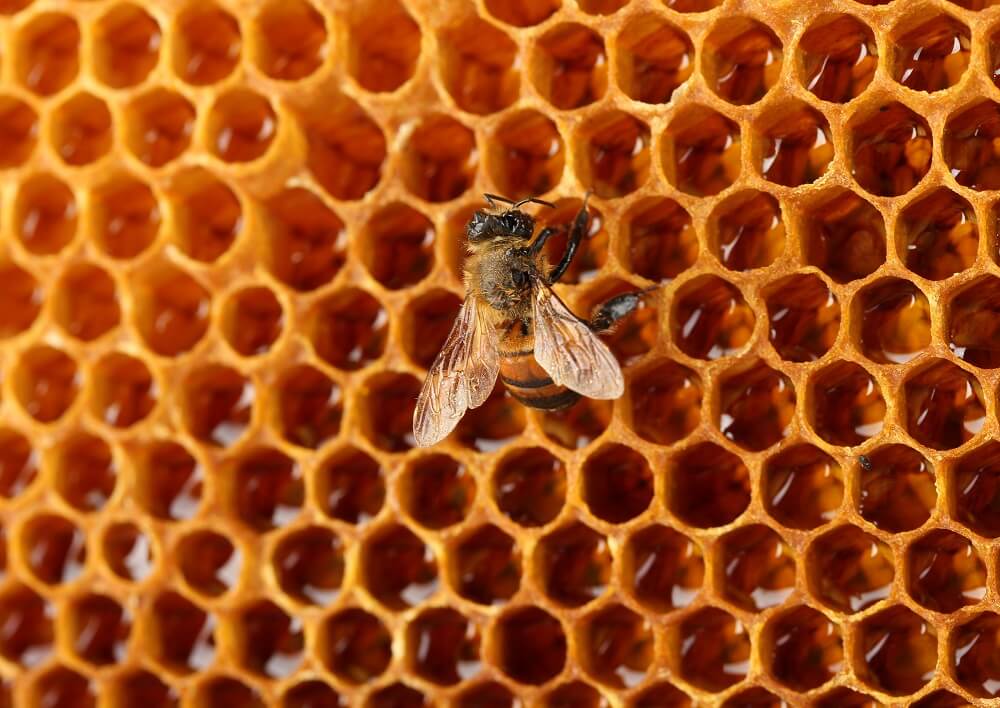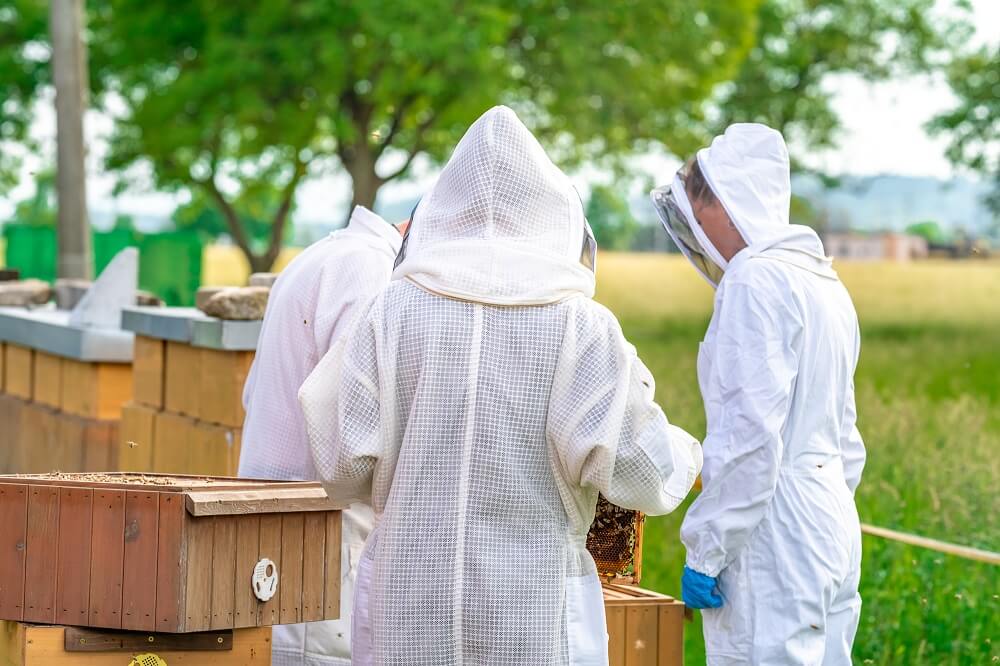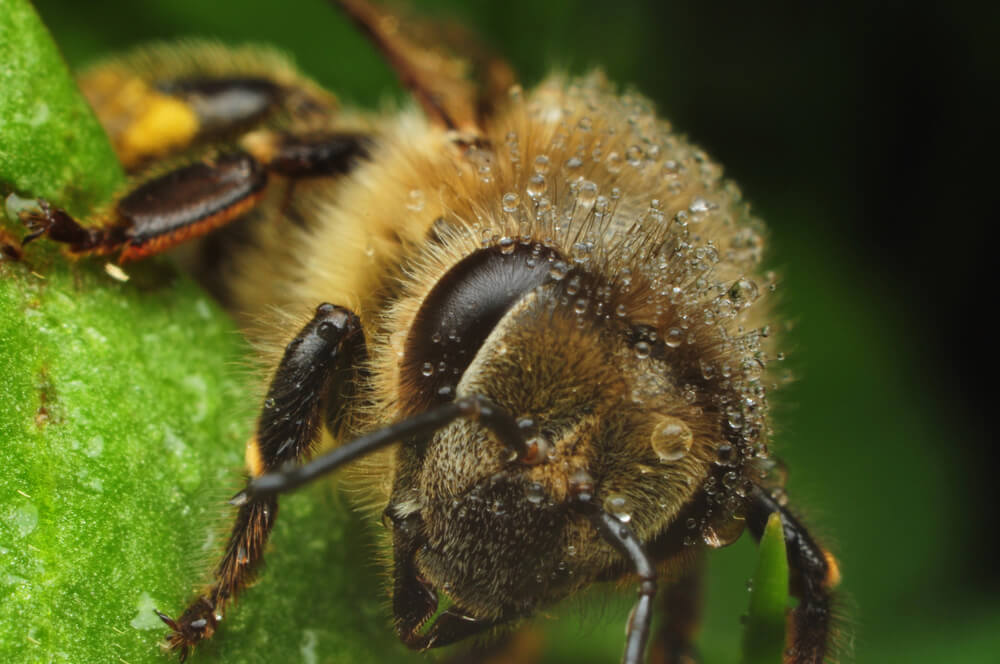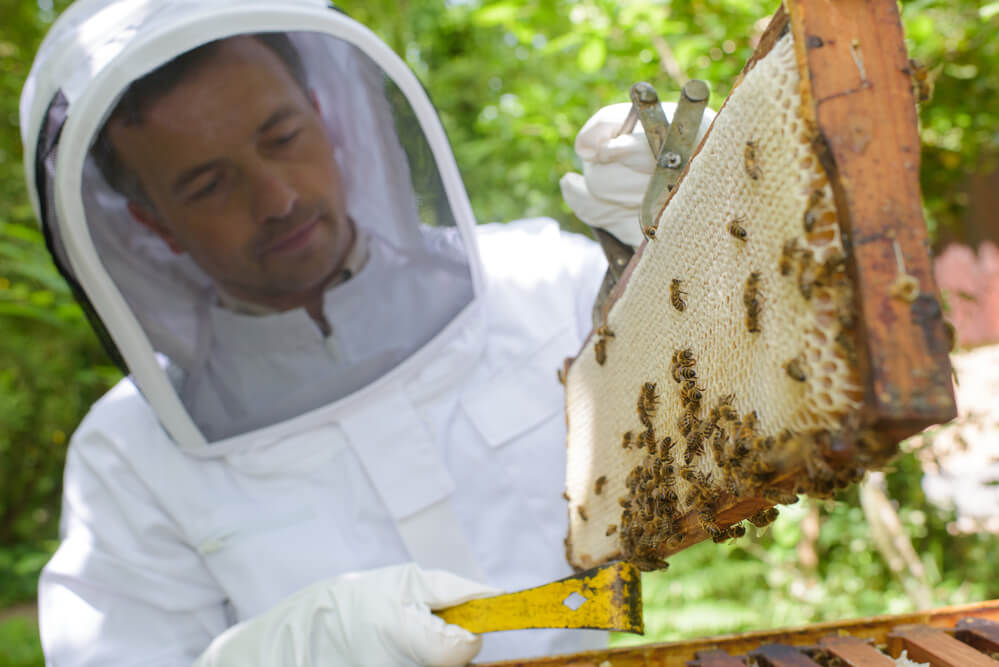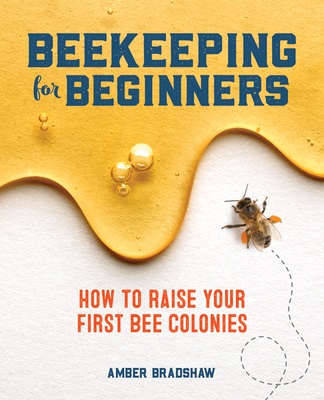Table of Contents:
What is a Brood Box?
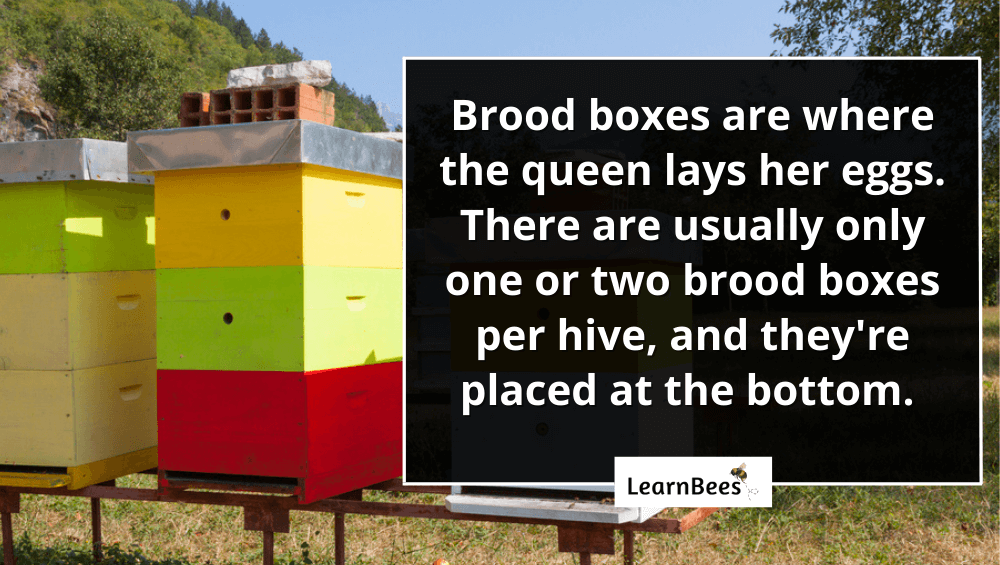
A brood box is a box at the bottom of the hive where the queen lays eggs.
The word “brood” refers to the honeybee’s eggs, larvae, and pupae. Honeybees go through those three development stages before becoming adult honeybees.
But keep in mind:
Brood boxes are different than honey supers.
As the name implies, honey supers are used to store honey. Honey supers are stacked on top of the brood boxes, and beekeepers often place a queen excluder between the brood box and honey super. This prevents the queen from laying eggs in the supers.
But here’s the thing:
Structurally speaking, there is no difference between a brood box and a honey super.
Brood boxes and honey supers can all be the same size or different sizes.
For example, many beekeepers use deep boxes (9 5/8″) for brood and medium boxes (6 5/8″) for supers.
That said, some beekeepers use all deeps while others use all mediums.
Why?
Because it largely depends on the amount of weight you can lift when the box is full of honey and bees. A deep super can weigh between 70-90 pounds, while a medium super can weigh 40-60 pounds.
How Many Brood Boxes Should I Start With?

Start with one brood box per hive.
As the hive grows, an additional brood box can be added to the hive. As a general rule, beehives typically have one or two brood boxes in total.
Using three or more brood boxes usually means that you’re doing your bees a disservice. In this case, it’d be better to split the large hive so you can get back to one or two brood boxes.
But remember:
It also depends on whether you’re using a medium box or a deep box.
A deep brood box will hold more and require fewer total boxes. However, a deep box can be very heavy and hard to lift for those with limited physical strength.
Medium boxes are ideal for honey or brood but will need more total boxes than would be used with deeps. That said, the weight of mediums is manageable for most beekeepers.
When Should I Add a Brood Box?
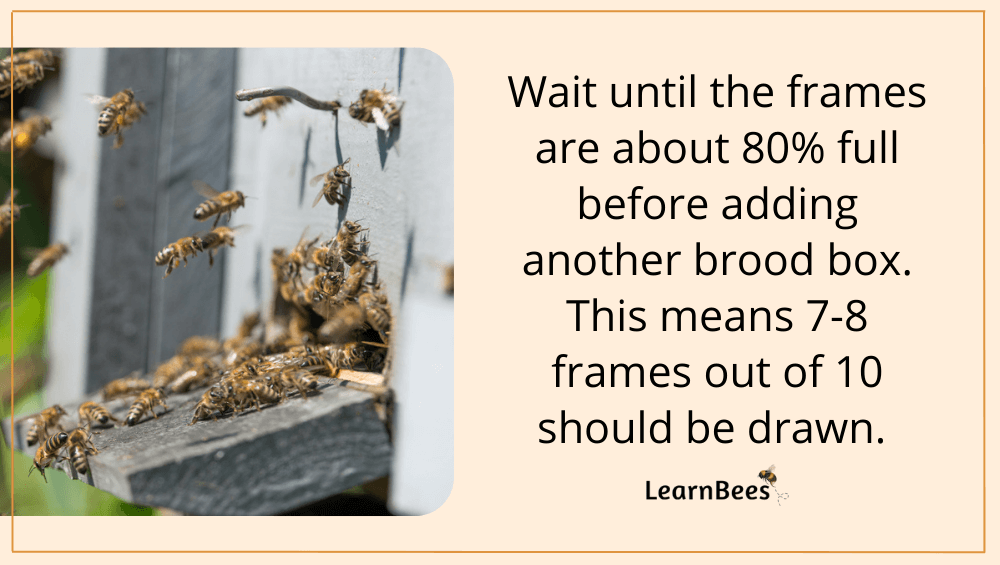
We recommend starting with one brood box. After 7-8 frames are filled, it’s time to add a new brood box of ten frames.
We suggest adding a second brood box before adding any honey supers. This ensures that your colony is strong and gives the queen enough space to lay eggs.
With that said, you don’t want to add a brood box before the first one is 80% full.
Why?
Because the more room you give the bees, the more effort they have to spend regulating the temperature and humidity of the hive. You don’t want to overwhelm the bees. Additionally, if you add a brood box too soon then the bees might work upward instead of finishing the outside frames.
Now the question becomes:
How long does it take bees to fill a brood box?
The answer is it depends on the hive strength and nectar flow. In ideal conditions, a strong colony can fill a brood box in about three weeks.
A new package of bees can easily take up to 2 months to fill a brood box. This is completely normal. Your colony may fill it faster or slower, depending on your local conditions.
A strong colony includes a young and healthy queen who lays eggs as fast as she can. The colony must also be free of diseases like foulbrood and chalkbrood.
And just as important?
Bees need to produce excess honey to feed their growing population. This is where flowers come in. Bees need access to plenty of nectar to make honey, so growing a pollinator-friendly garden is a great place to start.
If you’re dealing with a new colony or a shortage of nectar in your area, then it’ll take your bees longer than three weeks to fill the brood box. The key is to keep an eye on the frames until they’re about 80% full. Once 7-8 frames are drawn, you can add another brood box.
FAQs on Brood Boxes
- Can I take honey from the brood box?
- Should I add a brood box or honey super?
- Can you use brood boxes as honey supers?
- How much honey should be in the brood box?
- Can you add a second brood box too soon?
- Does a brood box need frames?
- Why is my brood box full of honey?
- What is a brood box used for?
- How many brood boxes should I start with?
- What is the difference between a brood box and a super?
- How long does it take a bee to fill a brood box?
- How tall is a deep brood box?
- Can you use a medium for a brood box?
- How heavy is a full brood box?
- How deep is a bee brood box?
- Should I rotate brood boxes?
Can I take honey from the brood box?
Yes, you can. But, generally, you don’t because it’ll be mixed with pollen and larva, which needs to be filtered out. It’ll also come out darker in general than honey from honey supers.
Brood box honey is also often contaminated with the mite treatment you use, so most products say to remove honey supers before mite treatment. If you treated the brood box with any product that says remove the supers before treatment, then you shouldn’t extract that honey.
—> Go back to the FAQs on brood boxes
More to Explore:
Should I add a brood box or honey super?
We recommend adding a second brood box before adding any honey supers. This ensures that your colony is strong and gives the queen enough space to lay eggs.
The best time to add a honey super to your hive is when 7-8 of the ten frames are drawn in the top brood box. This often occurs during times of natural population growth (usually the spring), before or during a honey flow (spring or summer), or during the swarming season (typically the spring).
In my climate, we usually add supers by late spring. It may be sooner in some warmer climates.
—> Go back to the FAQs on brood boxes
More to Explore:
Can you use brood boxes as honey supers?
The only difference between a brood box and honey super is what they’re used for. However, we recommend keeping brood boxes for brood and honey supers for honey.
Don’t switch them. It’s poor practice to use any frames that have had brood in them for honey that is then sold.
—> Go back to the FAQs on brood boxes
More to Explore:
How much honey should be in the brood box?
When inspecting a healthy frame, you’ll notice cells in the lower center filled with brood followed by a small layer of pollen and honey. This is normal, and it’s used to feed developing larvae.
However, you want to ensure there isn’t a larger percentage of cells filled with nectar or pollen because this could mean the hive is honey bound. This can occur when there is a heavy nectar flow, and the bees start storing the nectar in the brood nest cells.
If your hive is honey bound, you can assist your bees by adding a honey super. You can also remove honey frames and replace them with empty drawn comb or foundation frames.
—> Go back to the FAQs on brood boxes
More to Explore:
- How Many Bees Are in a Hive?
- What is Backyard Beekeeping?
- Honey Extractors 101: Everything You Need to Know
Can you add a second brood box too soon?
Yes, and adding a brood box too soon isn’t good for your bees.
Your honeybees need to be able to keep the brood warm. If you add a second brood box too soon, your cluster may not cover the brood, resulting in the brood becoming too cold and dying.
You don’t want to overwhelm your bees by giving them more than they can handle.
The rule of thumb is to add a second brood box when the first one is 70-80% full. However, this will vary depending on the time of year, your climate, and the strength of your colony.
—> Go back to the FAQs on brood boxes
More to Explore:
Does a brood box need frames?
Yes, there are typically nine or ten frames per brood box.
Some beekeepers prefer using nine frames instead of ten because it gives them more room during hive inspections. It helps prevent the brood box from getting too jammed.
To use nine frames, simply place the frames in the center of the brood box and leave the excess space on the ends. During your inspections, slide the first frame over to the empty spot and lift it. This method gives you enough space to help prevent accidentally rolling the queen.
—> Go back to the FAQs on brood boxes
More to Explore:
Why is my brood box full of honey?
This is a sign that your hive is honey bound.
You need to move the honey frames up to honey super and move empty frames into the brood box too. This will give the queen room to lay.
Honey bound simply means that the brood box is filled with so much honey that the queen has nowhere to lay eggs.
—> Go back to the FAQs on brood boxes
More to Explore:
What is a brood box used for? What are brood boxes?
A brood box is the bottom box of a beehive where the queen lays her eggs.
The frames in the brood box are typically filled with a mixture of brood and food to feed the developing larvae.
The brood box is important because it helps the colony rear its young. It’s typically made of wood with nine or ten frames each. This allows the bees to store enough honey and pollen to feed the young and gives the queen enough space to lay her eggs.
The brood box is also sometimes called the brood chamber. It’s an essential part of the beehive, and without it, the colony would not be able to survive.
—> Go back to the FAQs on brood boxes
More to Explore:
How many brood boxes should I start with?
You should start with one brood box. You can add another one later as needed. You don’t want to add too many brood boxes too fast because it can overwhelm your bees.
Adding a second brood box is typically done when the first one is 70-80% full. This will vary depending on the time of year, your climate, and the strength of your colony.
You also don’t want to add a second brood box too soon because your bees need to be able to keep the brood warm. If you add a second brood box too soon, then your cluster may not cover the brood, which results in the brood dying because it became too cold.
—> Go back to the FAQs on brood boxes
What is the difference between a brood box and a super?
A super is an upper box of a beehive where the bees store their honey. A brood box is the bottom box of a beehive where the queen lays her eggs. The frames in the brood box are typically filled with a mixture of brood and food to feed the developing larvae. Honey supers should be filled with honey only.
—> Go back to the FAQs on brood boxes
How long does it take a bee to fill a brood box?
It depends on the strength of your hive, nectar flow, and climate. In ideal conditions, it can take a strong colony about three weeks to fill a brood box. For new colonies, it can take up to two months.
—> Go back to the FAQs on brood boxes
How tall is a deep brood box?
The standard size for a deep hive body is 19 7/8″ in length, 16 1/4″ wide, and 9 5/8″ in height.
—> Go back to the FAQs on brood boxes
Can you use a medium for a brood box?
Yes, you can.
There are advantages to using medium boxes over deep boxes. For one, one medium box will weigh 60 pounds at most, which is much less compared to the 90-pound deep boxes.
However, the most common combination beekeepers tend to use is deep boxes for brood boxes and medium boxes for honey supers. But you can use whatever makes sense, depending on your physical capabilities.
—> Go back to the FAQs on brood boxes
How heavy is a full brood box?
About 80 pounds.
—> Go back to the FAQs on brood boxes
How deep is a bee brood box?
Approximately 9 5/8″ deep.
—> Go back to the FAQs on brood boxes
Should I rotate brood boxes?
Rotating boxes simply means you take the upper brood box and place it under the other one.
The reason for rotating brood boxes is to reduce the likelihood of swarming. It’s a popular technique amongst commercial beekeepers because it’s quick and easy. However, for most backyard beekeepers, other methods of swarm control are more effective.
If you’re concerned about swarming, it’s smart to spread the frames vertically rather than simply rotating brood boxes.
A vertical spread, also known as pyramiding, means you take the brood frames and put them in the center of two brood boxes, one on top of the other. The queen has plenty of space to lay eggs with drawn comb on each side of the brood.
This takes more effort than simply rotating the brood boxes, but the results are usually better.
If swarming doesn’t appear to be happening, you can simply leave the brood boxes in place and add honey supers at the correct time. As the season continues, the bees will store honey overhead, and the queen will eventually expand the nest.
If later you begin to spot swarming signs, such as backfilling the brood nest, then you can take other actions to mitigate it.
